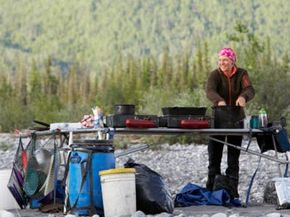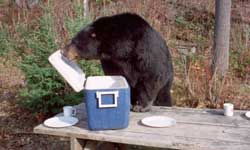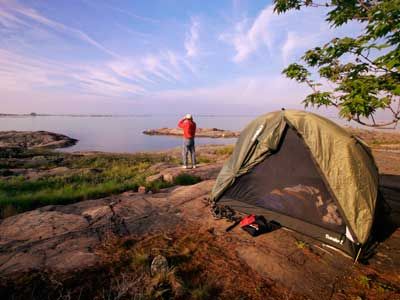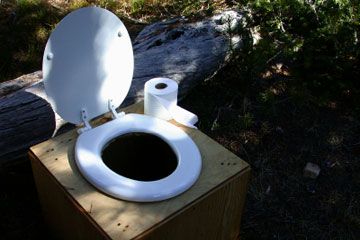Unlike kitchen cookware, pots, pans and dishes meant for camping, hiking, kayaking and other adventure sports are built to travel. They often feature lightweight materials and multifunction parts; they can also come with insulated, fold-away handles or removable handles for carrying hot pots. Ideally, they're compact, easy to carry and clean and tough enough to stand up to weather, backcountry use and nontraditional cleaning methods.
It's important to keep your camping style in mind when choosing camping cookware. Cooking outdoors presents difficult challenges, such as rain and wind, that you just don't encounter in a home kitchen. Most camp cooking implements work well for mild, summer outings, but if you camp during the winter or climb to high altitudes, you'll need cookware and stoves that are designed to perform under those conditions. For car campers, cookware weight isn't much of an issue, but for backpackers and other adventurers who carry all their gear with them, weight is a critical factor. Choosing heavier cookware may mean leaving behind an important tool or spare food and fuel, or cutting a day off of the trip.
Advertisement
Your cooking style will also influence your adventure cookware choice. If you're a boiling water cook, content to subsist on instant foods, an aluminum pot, insulated mug and eating utensils are all you'll need. But if you're the base camp chef preparing meals for a group, or even if you just want to cook an occasional meal for yourself, you'll need a wider variety of camping cookware and tools. A fry pan and a Dutch oven are useful choices. Baking isn't off-limits at the campsite if you take along a reflector oven. You can buy tea kettles and coffee percolators designed for camping, but their single function might not justify the space they take up in a backpack. You can reduce size and weight with a coffee press or a one-cup reusable coffee filter, or, if you want to go compact, you can substitute a coffee ball.
Here are some other accessories to consider including in your camping kitchen:
- A cooler
- A cutting surface
- Insulated mugs, thermoses or insulating covers for pots
- Extra fuel
- Matches or lighters
- Cooking utensils, such as tongs, ladles, spatulas, big spoons and knives
- Spices and condiments
- Dishcloths and scrubbing sponges
- A stove repair kit
Explore the variety of camping cookware on the next page.
Advertisement



